Have you ever experienced that you have just updated your macOS and it started misbehaving and showing a black or gray screen?
Users might experience this sudden crashing of the operating system for many reasons. However, a few fixes here and there can help users overcome this issue effortlessly. In this article, we will discuss various methods to resolve the macOS crash with minimal effort.
Try Recoverit to Perform Mac Data Recovery

In this article
Part 1. Top Reasons macOS Keeps Crashing on Your Computer
Users who are looking for solutions to mac keeps crashing issues must first know the reasons for the occurrence. Mentioned below are some of the factors that cause your Mac to crash repeatedly:
- Application Incompatibility: Application incompatibility happens when an app is not updated or designed to work with the current macOS version. This often occurs because the app’s internal interactions with macOS APIs become incompatible after OS updates.
- Heavy CPU Usage: This is a common cause of crashes when high-demand software like games or graphic editors overloads the processor. Excessive CPU load can trigger overheating or system throttling, which may cause the Mac to freeze.
- Hardware Incompatibilities: Hardware incompatibilities can destabilize macOS and trigger crashes. Improperly installed or incompatible hardware components can cause conflicts at the system level.
- Lack of System Memory: Less system memory for running software also leads to a crashed MacBook. Memory-intensive programs may demand more RAM than is available, causing the system to freeze or stop responding.

Part 2. How to Diagnose Why macOS Keeps Crashing Quickly - 10 Fixes to Try!
After learning about the reasons for system crashes in your Mac, let us now have a look at some of the system-specific issues to resolve this problem:
1. Restart Your Mac
Restarting your Mac refreshes system resources and clears temporary system glitches that may be causing instability. This process terminates background processes that could be conflicting or consuming excessive CPU. Read the instructions mentioned below to learn how to restart your Mac quickly to resolve apple computer crash:
Instructions. Go to the extreme left corner of the screen and click on the "Apple" icon to locate the "Restart" button.
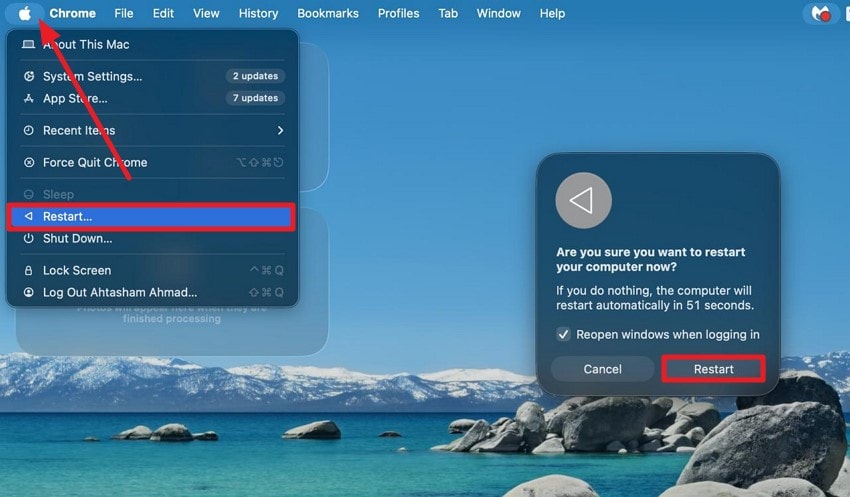
2. Update macOS and All Apps
Keeping macOS and applications updated ensures compatibility and closes security vulnerabilities that might lead to an OS crash. Updates often include bug fixes that address known stability issues. To learn how to update the operating system and the application on your Mac, follow the steps mentioned next:
Update macOS
- Begin by accessing the system's settings and selecting the "General" section from the left. Next, locate the "Software Update" option on the right and click on it.
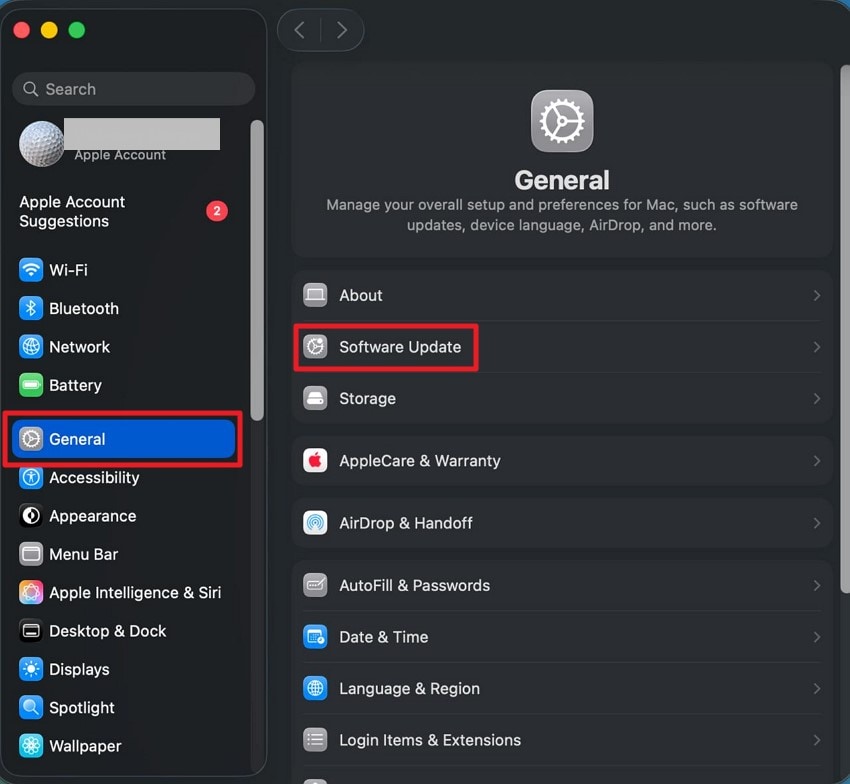
- Search for the system update if available and click on the “Update Now” button to start the system update process.

Update Applications
Instructions. Acquire the App Store on your Mac and access the “Updates” option from the left. Now, select the application that needs to be updated and press the “Update” button to begin the process.
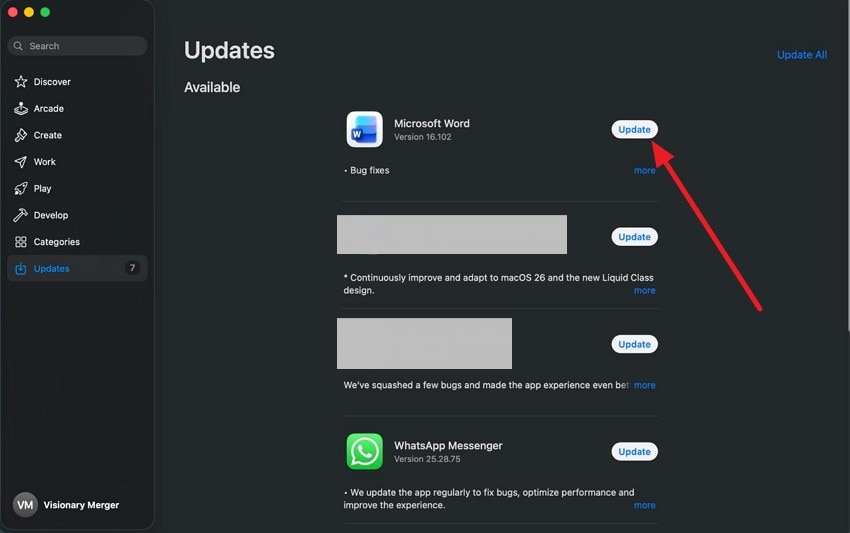
3. Free Up Storage and Remove Junk
Maintaining optimal storage on your Mac is critical for its efficiency and responsiveness. When storage is well managed, your Mac can swiftly locate and access files. This proactive approach results in a smoother user experience and reduces the likelihood of apple computer crash caused by storage issues. Follow the steps mentioned below to learn how to free up space and remove junk on a Mac:
Free Up Storage
- Start the process by accessing the settings on your Mac and selecting the "General" settings from the left. Next, locate the "Storage" option and click on it to check the storage.
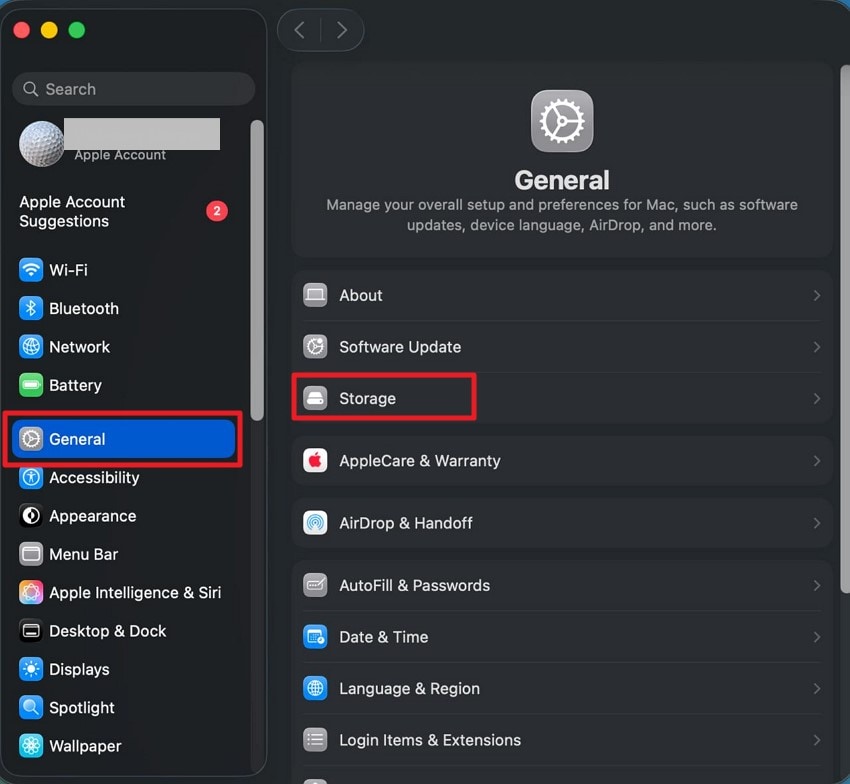
- Now, click on any utility, such as Applications or Books, to further proceed.
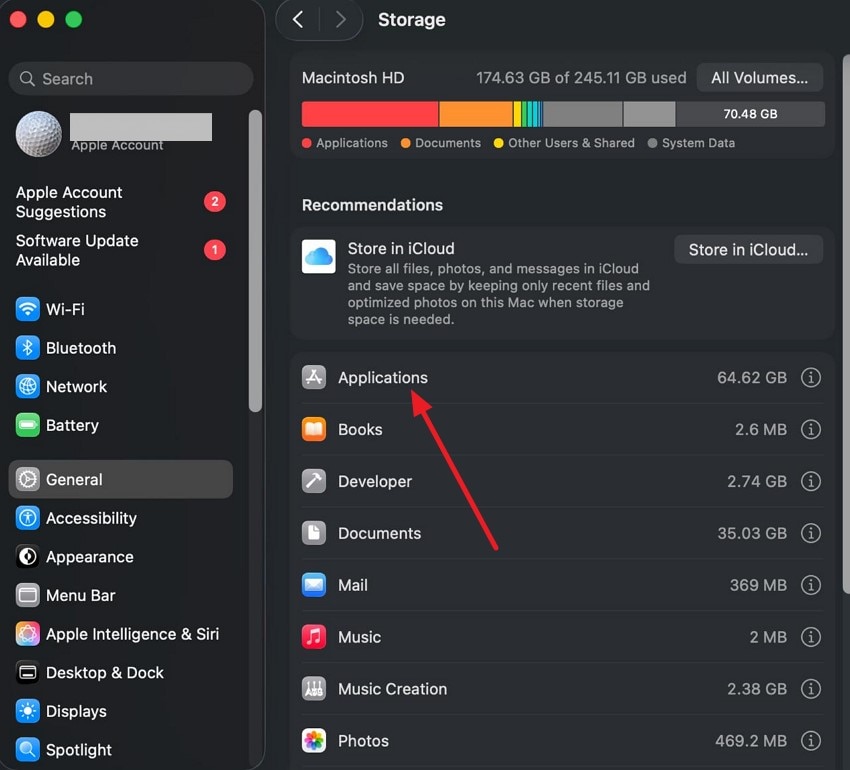
- Choose the application that you want to delete by clicking on it. Press “Delete” and hit the “Done” button to successfully remove an app. Repeat the process to remove all the unwanted apps in order to free up space on your Mac.

Remove Junk
- After accessing the “Storage” from your system settings, scroll through the options and click on the “Trash” option.

- Press the “Empty Trash” button to remove the junk files from the system storage.
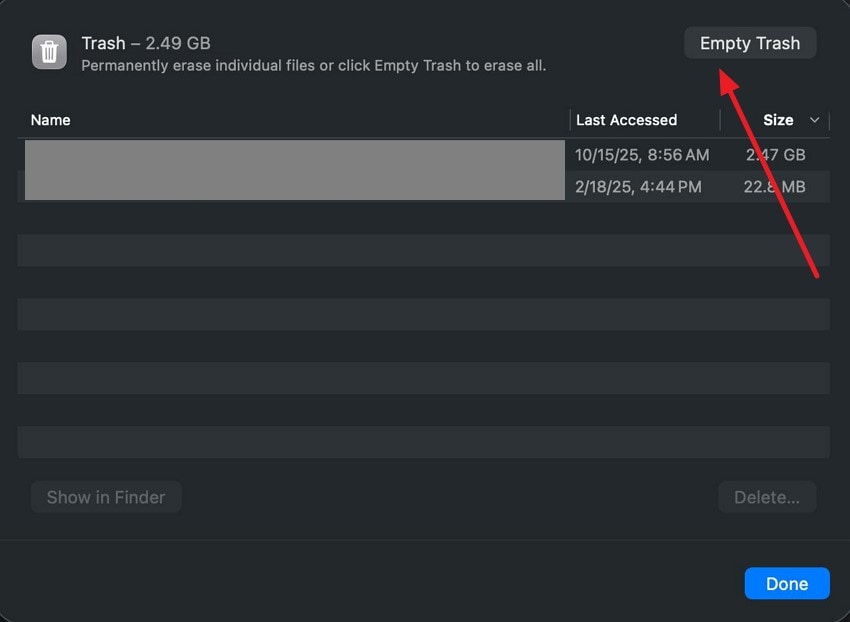
4. Remove Recently Installed or Problem Apps/Extensions
Removing recently installed or problematic apps and extensions restores system stability by eliminating software that interferes with macOS processes. Uninstalling these elements helps maintain a clean operating environment free from conflicts like mac keeps crashing. To learn how to successfully remove an application, read the steps mentioned below:
- Head to the Mac’s settings and select the “Storage” option after enabling the “General” section from the left.
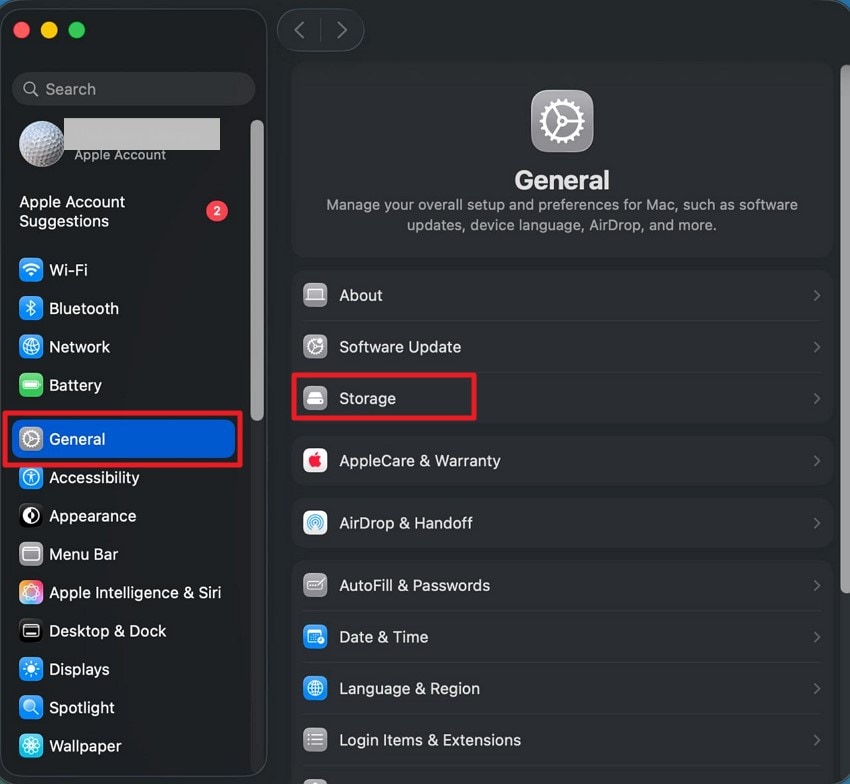
- Now, locate the "Applications" option in the following screen and click on it.
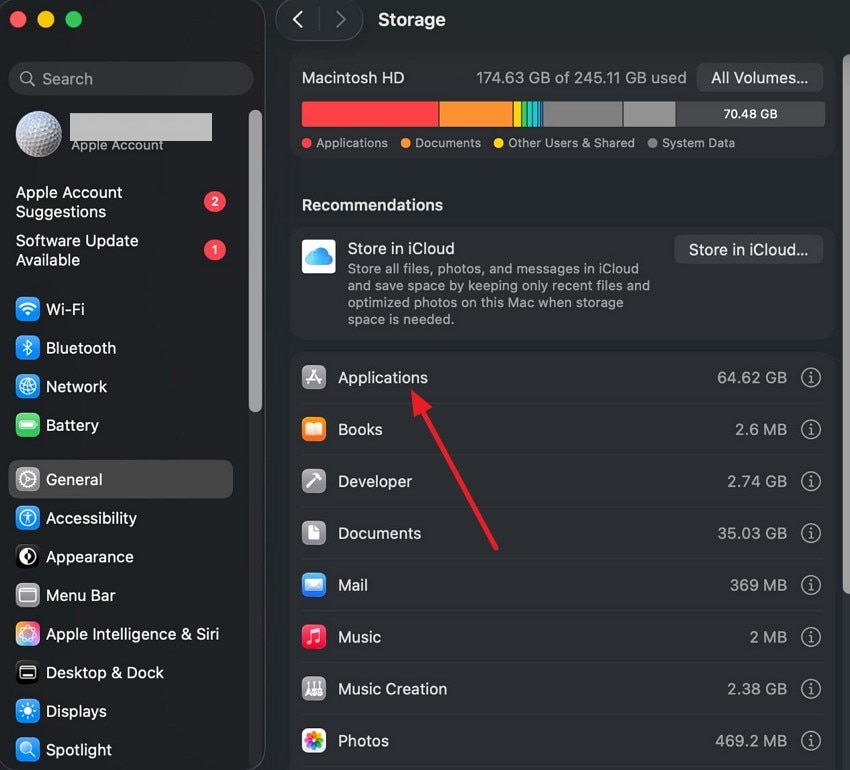
- Find the application you want to remove and press the "Delete" button. Confirm the changes made by clicking the "Done" button located at the bottom.

5. Check for Overheating
Checking for overheating as a fix involves monitoring your Mac’s temperature and taking measures to keep it within safe limits. External conditions like ensuring proper ventilation and keeping your Mac on hard surfaces aid in airflow and cooling. This approach minimizes crash risks tied to excessive heat and prevents macOS crash.
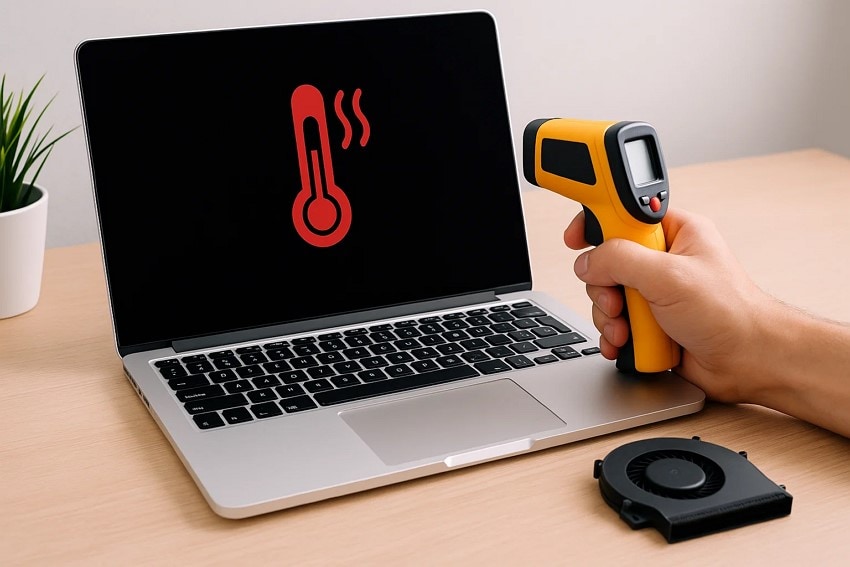
6. Run Disk Utility (First Aid)
Disk Utility’s First Aid checks and repairs filesystem errors that may corrupt system data. Regularly running this utility helps maintain drive integrity, preventing macOS from encountering file corruption. It is a preventative maintenance tool ensuring healthy disk performance. Here is how you can run the First Aid feature available for the Disk Utility to resolve mac keeps crashing issue:
- After opening the Disk Utility feature on your Mac, find and locate the "First Aid" option in the top-right corner.
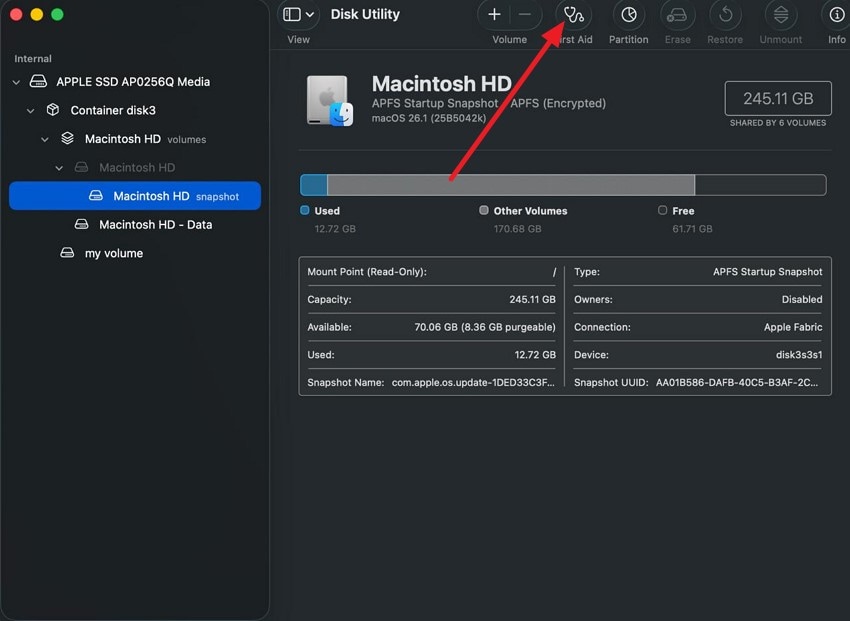
- Click the “Run” button in the following small dialog to confirm the First Aid process execution.

7. Boot in Safe Mode
Safe Mode disables non-essential startup items and performs system checks, allowing macOS to run with minimal extensions. This environment isolates problems caused by third-party software and caches. If crashes stop in Safe Mode, the culprit is likely add-on software. Follow the steps mentioned below to learn how to boot your Mac in Safe Mode to fix apple computer crash:
Instructions. Force start your device and immediately long-press the "Shift" key on your keyboard. Next, select the "Safe Mode" option from the options provided to boot the device in Safe Mode.
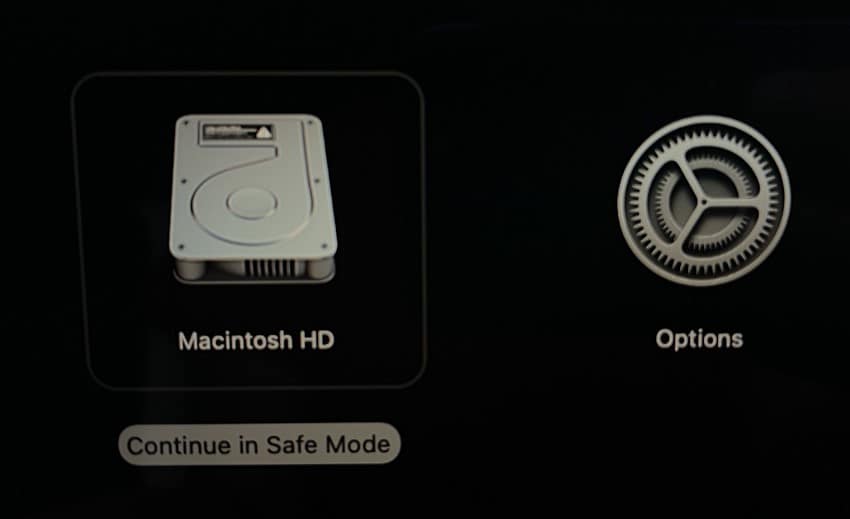
8. Run Apple Diagnostics
Apple Diagnostics is a valuable tool that helps identify hardware issues within your Mac, including problems with the logic board, memory, and wireless components. It is a quick and straightforward way to troubleshoot potential hardware failures without needing external tools or technical expertise. To learn how to perform the Apple diagnostics for a macOS crash, read the instructions provided next:
Instructions. Shut down your Mac, then press and hold the power button until startup options appear. Press “Command + D” to start diagnostics, connect to Wi-Fi if prompted, select language, and wait for results.

9. Reset NVRAM/SMC (Intel Macs)
Resetting NVRAM and SMC on Intel Macs is a fundamental troubleshooting technique that addresses hardware-level settings influencing key system operations. These resets do not affect user data or installed software but provide a clean slate for system hardware management to operate properly. To learn how to perform these methods, read the steps mentioned below and resolve the crashed MacBook issue:
Reset NVRAM
Instructions. Reset NVRAM by shutting down the Mac and holding “Option + Command + P + R” keys at startup until you hear a second startup sound or see the Apple logo twice.
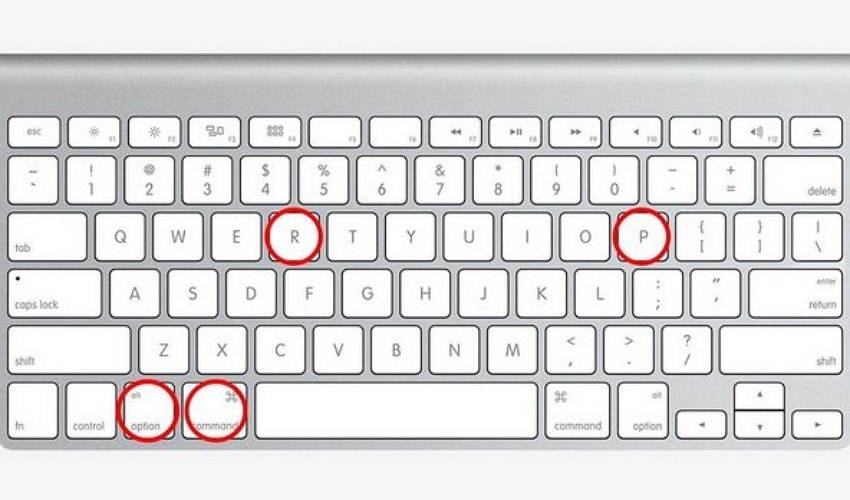
Reset SMC
Instructions. Reset the System Management Controller (SMC) depending on your Mac model, usually involving shutting down and holding the “Shift + Control + Option” keys.
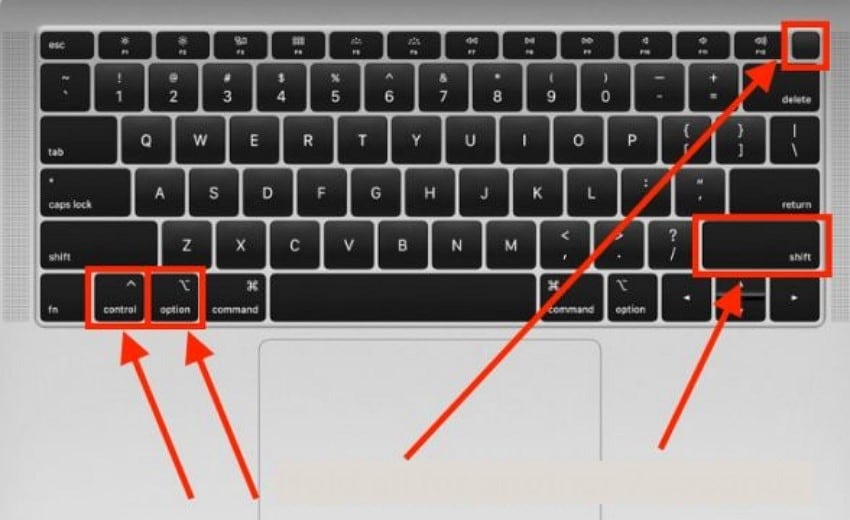
10. Downgrade or Reinstall macOS
Downgrading or reinstalling macOS acts as a key method to resolve persistent crashing problems by restoring the system’s core functionality. When a recent update introduces bugs or incompatibilities, downgrading to a previous stable macOS version can bring back reliability and fix mac keeps crashing problem. To learn how to perform the following task, read the steps mentioned below:
Reinstall Mac
Instructions. Use macOS Recovery by restarting the Mac and pressing “Command + R” to access recovery utilities. From there, choose to reinstall macOS or use a bootable installer of a previous version to downgrade. Follow the prompts to complete installation or downgrade safely without data loss.

Downgrade OS
- Search for macOS on the App Store and select your desired operating system from the options by clicking on it.
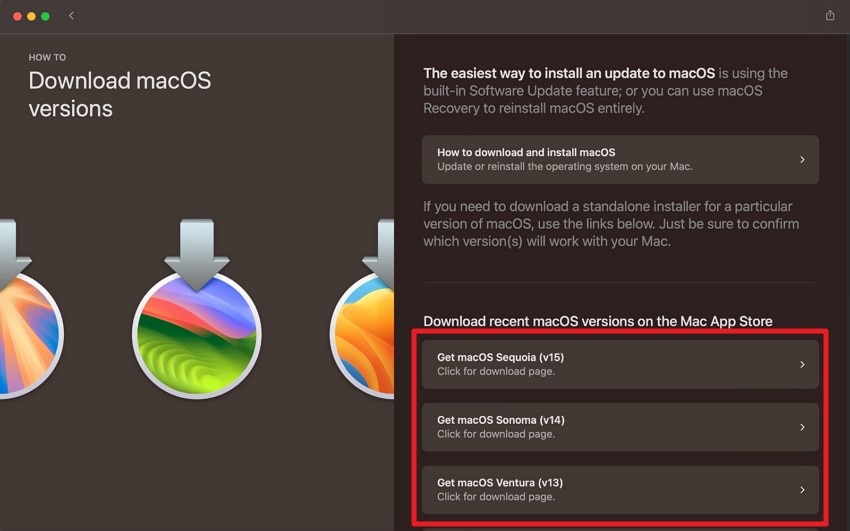
- In the following interface, click on the “Get” button to successfully install the OS version

Pro Tip. Recover Files Safely When macOS Keeps Crashing with Recoverit
Repeated system crashes may lead to severe damage, such as data loss or damage. If you have encountered file loss while macOS crash, you can use tools like Recoverit to recover the lost files effortlessly. This AI-powered data recovery tool provides you with the utility of retrieving missing files on your Mac in no time. The tool runs a deep scan within the storage and gets back all the recoverable files.
Moreover, it allows users to start and stop the scanning process according to their preferences. Users can search for a specific file using the search bar after applying filters. The tool also provides the utility of previewing the recovered files before saving them to your devices.
Coherent Features Offered by Recoverit
- Batch Data Recovery: Users get the ability to retrieve more than one file at a time with Recoverit to save time and effort.
- Multiple Formats Support: Recoverit offers more than 1000 file formats to retrieve damaged or lost files with only a few clicks.
- Vast Storage Device Support: With Recoverit, you get the ability to recover data from 1 million devices, making it one of the most versatile data recovery tools.
How to Recover Lost Data using Recoverit
Having learned the data recovery tool in detail, let us now have a look at the step-by-step guide to recover files after an apple computer crash using this tool:
1. Select Location to Start Recovery
Start by launching and choosing the device storage from the homepage. Once selected, the tool will instantly begin the scanning process.
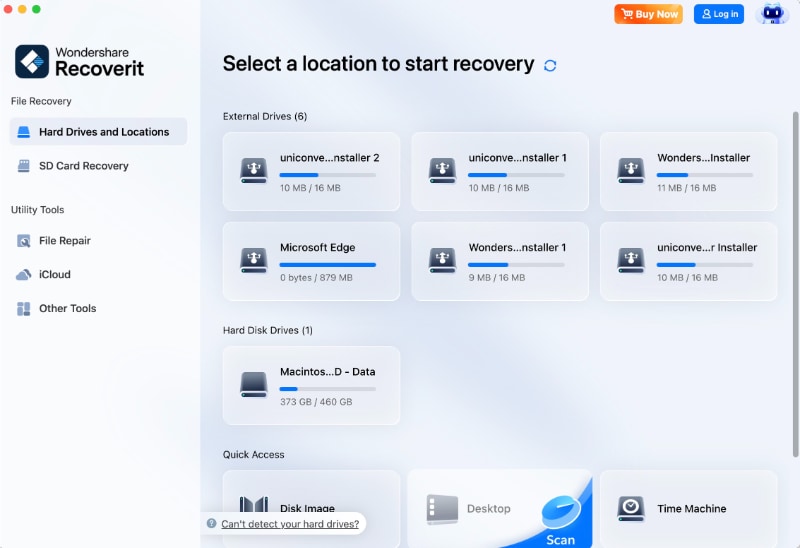
2. Recover Scanned Files
Once the scan is completed, all the recoverable files will be available. Click on your desired files and hit the “Recover” button located at the bottom.
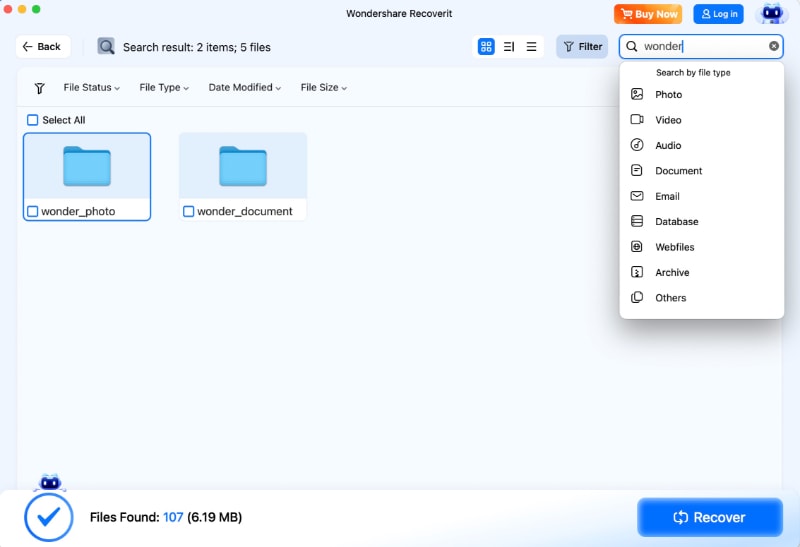
3. Preview and Recover the Data
Finally, preview the recovered file within the tool’s interface and press the “Recover” button to retrieve the lost data to your device.

Part 4. Prevent macOS from Crashing with These Smart Tips
Experiencing frequent macOS crash can disrupt your productivity and cause frustration. However, implementing a few smart preventive measures can significantly improve your system’s stability and keep it running smoothly for longer.
- Perform Regular Updates: Regularly update macOS and all installed applications. Updates bring essential bug fixes and security patches that prevent crashes caused by outdated software.
- Manage Storage: Manage your storage effectively by deleting unnecessary files and apps. Maintaining free disk space helps macOS run its processes efficiently without slowdowns or crashes.
- Monitor Potential Overheating: Monitor and address potential overheating by ensuring good ventilation and cleaning internal fans. Keeping your Mac cool protects hardware components and prevents heat-related shutdowns.
- Perform System-Based Fixes: Utilize macOS built-in tools like Disk Utility’s First Aid and Safe Mode to identify and resolve underlying issues. These tools help maintain drive health and isolate problematic software.
Conclusion
To wrap it up, this article discussed various methods for resolving the macOS crash issue. Using these system-oriented methods, you can prevent and stop your device from crashing easily. However, if you face data loss during the crash, you can use tools like Recoverit. This efficient tool will retrieve all the missing files by running a scan within your system.
FAQ
-
1. Why does my Mac keep crashing?
macOS can encounter system crashes due to many reasons, such as heavy CPU usage or hardware incompatibility. Moreover, your system might encounter a crash if it is running low on storage. -
2. How to recover lost files after a system crash?
One of the most reliable ways to retrieve missing files after a crashed MacBook is by using Recoverit. This efficient tool will run a scan within your storage and get back all your important data in no time. -
3. Is Recoverit easy to use for recovering files on Mac?
Yes, Recoverit features a user-friendly interface with guided steps and preview options, making recovery straightforward for all users. -
4. Does Recoverit work with the latest macOS versions?
Recoverit is regularly updated to maintain full compatibility with the newest macOS releases, providing reliable recovery anytime you need it.




 ChatGPT
ChatGPT
 Perplexity
Perplexity
 Google AI Mode
Google AI Mode
 Grok
Grok























